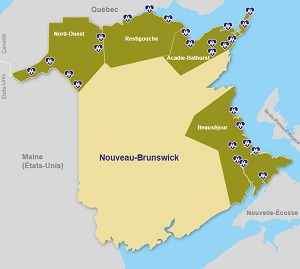Board Policy CA-350: Quality of Care and Safety of Patients Committee
Effective date: 2022-06-21
Policy
Terms of reference
The Quality of Care and Safety of Patients Committee (the “Committee”) is responsible to ensure that mechanisms are in place to monitor and improve the quality performance of the Network. The committee is responsible for promoting and overseeing all quality management, patient and user safety, risk and ethics activities so as to guide the Board of Directors (the “Board”) regarding its responsibilities in all aspects related to the delivery of health care services to patients.
Membership and operations
- The Committee is made up of four voting members of the Board, one of whom will act as Chairperson.
- The Committee meets four times a year according to a pre-set schedule.
- The Committee operates within the guidelines set out in the Board of Directors Committees Policy (CA-300).
- The chairpersons of the Medical Advisory Committee, the Professional Advisory Committee and the Patient and Family Advisory Committee are permanent members without voting rights.
- The Chair of the Board of Directors is an ex officio voting member and the President and Chief Executive Officer is an ex officio non-voting member.
Responsibilities
-
The Committee oversees, advises the Board, and makes the recommendations it deems appropriate on issues related to:
-
The processes around client services and the management of quality, risk and patient safety as well as to ethics;
- Prioritizes quality and patient safety and sets the direction that the Network must follow in terms of quality;
- Recommends to the Board frameworks for quality and patient safety, risk management and ethics and follow their implementations;
- Reviews and recommends a quality and patient safety plan as well as annual objectives for improvement;
- Ensures that effective mechanisms are established to evaluate and improve the quality of care and services and manage risks;
- Regularly monitors and evaluates the Network’s performance in terms of quality through its scorecard and other regular reports;
- Receives and analyzes reports from the Quality Management and Patient Safety Regional Committee and ensures that the necessary measures are taken to address discrepancies and improve the quality of care and services;
- Reviews policies related to quality, patient safety, ethics and risks management;
- Recommends educational programs on quality and patient safety for members of the Committee and the Board;
- Accreditation standards related to care centered on patient/client care, service quality and safety, and other processes related to the standards that are specific to a health network;
-
Patient/client satisfaction and experience and complaint management processes;
- Ensures that mechanisms are established to evaluate and improve the experience of the patient/client satisfaction and deal with complaints;
- Processes for granting, renewing, suspending or changing medical staff privileges;
- Processes related to skills development and maintenance for professionals and physicians and to delegated professional and medical functions.
-
The processes around client services and the management of quality, risk and patient safety as well as to ethics;
- The Committee also performs any other duties assigned by the Board.
Reporting
-
The Committee submits a report on its activities at each meeting of the Board, including an annual review of quality, patient safety, risks and ethics. Regular reports may include, among others:
- Quality indicators presented in a scorecard, including performance measurements on the quality of clinical services, patient safety, and client service;
- Progress in major improvements in performance and patient safety objectives;
- Root-cause analysis submitted by the Network’s Client Service, Quality Management and Safety Committee;
- Summary of adverse events reviews;
- Patient satisfaction/perception;
- Physician satisfaction/perception;
- Employee satisfaction/perception;
- Culture of patient safety;
- Accreditation;
- Verification of the credentialing and certification process;
- Report on ethics activities.
Committee’s work plan and annual objectives
-
The Committee adopts a work plan and annual objectives identifying its main interests as well as a presentation schedule (quarterly or annual) for the following year. Here are some examples:
- Overseeing a program to reduce medication errors;
- Supporting and overseeing a client service improvement initiative in the Emergency Department;
- Overseeing projects related to a patient quality and safety improvement campaign;
- Reviewing and updating the quality scorecard and other key indicator reports pertaining to quality and patients so as to ensure that they include advanced goals established for the Network;
[ Terms of Reference Reading and Understanding Record ]

